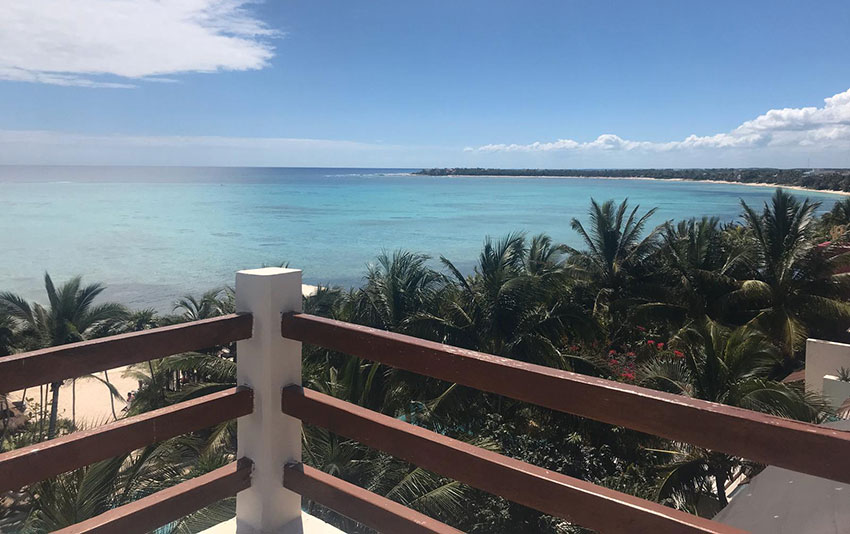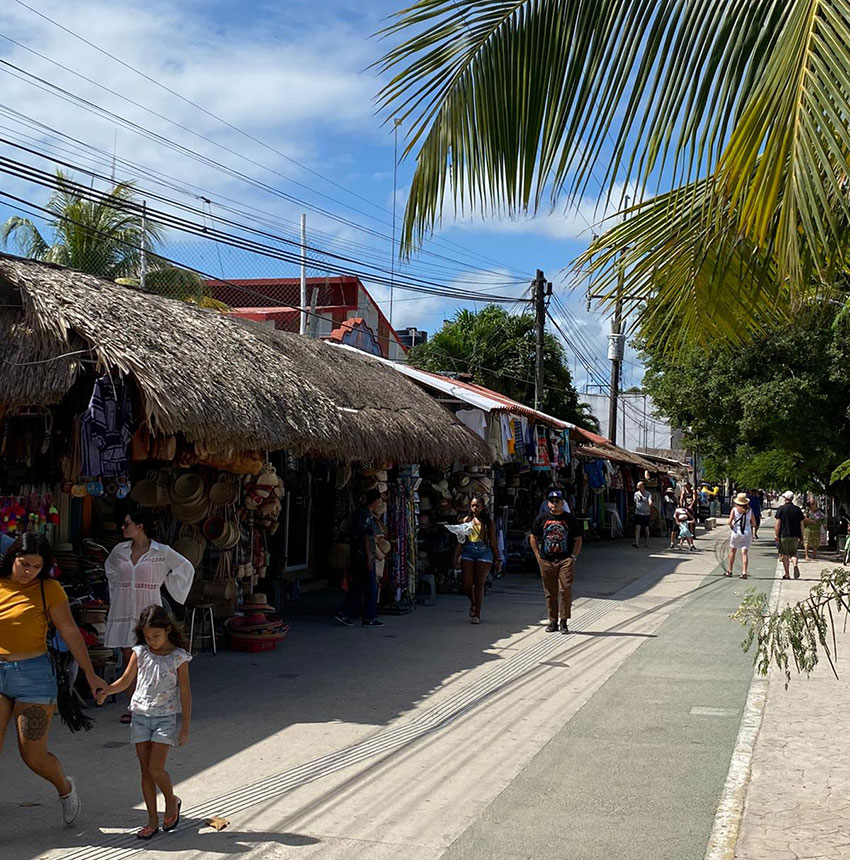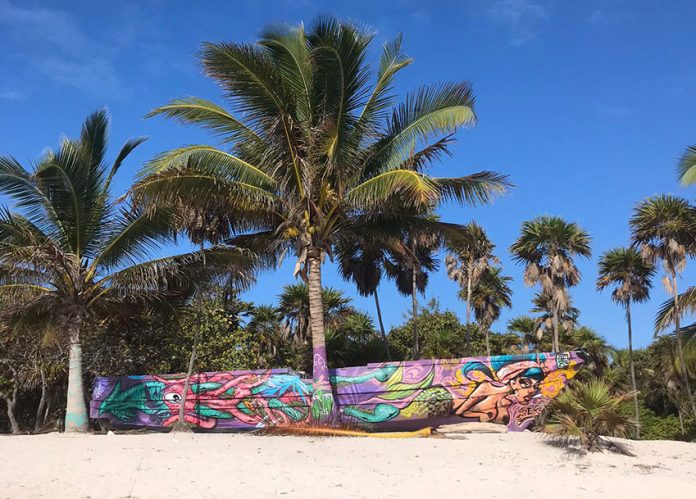Cat gets the sense that her plane is late — by about 10 years.
She’d always fancied the idea of Tulum, its quiet beaches, the progressive culture open to visitors of all kinds, a vacation spot untouched by the expanding reach of global tourism. Touching down first on the tarmac and then on the sands of the shorefront, she feels, though, that the winds have changed.
Now she reclines by the sea, watching the waves trickle in … “It’s nice,” she muses, raising a beer to her lips, “it just doesn’t feel … I don’t know …”
Cat is 26, currently on a WorkAway through Latin America, and had never managed to get down to Tulum before now. The trip has been pending in her brain for a long time but now she’s here she smiles through a muffled sigh as it seems, though pleasant, not quite what it was cracked up to be.
Cat is far from alone. The phenomenon of Tulum used to be well-known, the mysterious getaway for hipsters and beatniks, but it now reveals itself as a case study in the power of perceptions and notoriety. In building a reputation that was impossible to maintain in the face of an international marketplace, the Tulum we once knew was never destined for longevity. But the idea of Tulum seems to live on regardless; visions of a near-deserted paradise and spiritual awakenings linger, but the reality is nebulous. What really happened here?

To understand where Tulum has arrived, we have to look back to the inception of the Yucatán tourism machine. Before the 1970s, the entire peninsula was an annexed portion of Mexico, jutting out from the mainland at such an angle that its cultural separation almost made sense. Small, provincial communities dotted the region, and cities like Mérida, Campeche, even Cancún, had yet to begin their emergence into cultural hotspots.
But the indisputable success of the government’s ambitious project to convert sporadically populated, jungle-lined coast into a stretch of picture-perfect, sun-kissed tourist stomping ground galvanized the groundswell in support of the whole region’s rebrand. Despite a few muted labor pains, the Riviera Maya was born.
From then on, the momentum has been unstoppable, as the Riviera morphed into one of the most popular tourist destinations worldwide. Levels of arriving visitors have never failed to rise, but throughout the area’s tenure as vacation wonderland, people have demanded Cancún’s climate without its chaos. Tulum found itself, quite by accident, filling this gap, its pristine beaches placating the sun-searchers without the Darwinian struggles for reclining loungers.
The antithesis to Cancún, of course, was Tulum’s humble slice of coastal beauty where you could order a beer without being coaxed into a 40% tip and walk it back to the pool without tripping over a topless real estate agent who didn’t quite make it back to his hotel room the previous night. Wander back from the beach in Tulum and you may instead happen upon a massage hut with the offer 90 minutes for 40 pesos, the price of an ice cold chelada.
But Tulum ended up garnering a reputation that would become even more integral to its identity. It became a favorite destination for travelers, not tourists. Its jungle yoga classes, crystal-clear underground cenotes, locally run restaurants serving traditional Mayan recipes, had all paved the way toward a truly countercultural utopia; a melting pot for the strange and the adventurous. If you were looking for hedonism and revelry, you’d find that up the coast.
“Stay here and be still” became Tulum’s rallying cry. People did, and in the years that followed the Riviera Maya’s unveiling, Tulum achieved the almost unattainable combination of interest, tranquility, and relative obscurity.

It was in this goldilocks state that Tulum hovered for the best part of 30 years. It was Cancún’s arch-antagonist, and became an almost ethereal concept of paradise to people who had heard the name. But, perhaps inevitably, the idea of Tulum was overtaken by its reality. In the last 10 years, social media influencers have flocked upon the town’s quiet beaches, bringing with them their hordes of followers, beginning the rolling process of expanding the Tulum name.
In other contexts this would be positive, but for Tulum, whose name recognition comes from its lack of name recognition, this posed a problem. As ever-growing numbers of curious tourists emerged from the Cancún compounds in search of something marginalized, brutalist design hotels, chain coffee shops, and beachfront vendors sprang up to service the need. Tulum’s niche receded overnight with the tide, and the hidden gem of the Riviera Maya began its journey to insipid, capitalist dwelling place.
Laura, a political adviser from Campeche, recalls this downward spiral, having frequented the town in its heyday. “You used to feel at peace here, and there was a sense you had happened upon something very special,” she explains. “I used to get that feeling every time I arrived.” But now Laura’s tone starts to shift: “Everything is expensive, everyone wants to rip you off, the rich have bought all the houses, clubs, restaurants … It’s just another millionaires’ playground!”
To sit back on the beach in Tulum now, the culmination of its struggles are all visible in one form or another. Remnants of its past glories as provincial paradise remain — the yoga classes, the cenotes which are fairly untouched if a little more busy — but there is an overriding sense of a community that’s conspicuously hankering for the past.
Since the influx of tourists grew and multiplied, Tulum has shifted its values. It tends not to think twice about a millionaire converting beachfront property into a nightclub, or DJs commanding the shore during the nights, even less so about the descent of its previously unimposing seaside culture into overbearing money-machine. Tulum will now take whatever it can, a product of a gradual wearing of its original sense of seemingly unsulliable identity.
It seems to be becoming clearer by the day that success is simply unsustainable when it comes to tourism, and that bohemian hideaways tend to have a limited half-life. We become forced into the question of whether truly successful hot-spots can ever survive their own prosperity.
I ask this of Cat, and after a moment of thought she replies, “everyone wants to be in on something special, everyone, until it just isn’t quite so special anymore.”
Writer Jack Gooderidge is based in Campeche.
